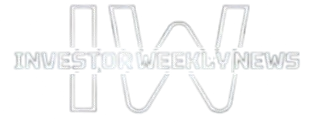There are multiple ways people try to increase their progress in business or trading environments, and some methods may bring more direction than others. Professional support and careful observation of market details might help shape those efforts into more useful outcomes. Depending on the situation, different tools or services could be applied. These approaches might not always guarantee results, but they often provide added clarity or structure during the process.
Gain direction through structured coaching
Receiving guidance from someone with focused experience may help bring more order to how progress is approached. Coaching is often used to assist with planning, goal setting, and skill review. This method might not be the same for every situation, but having access to someone who explains methods and offers structured feedback can support clearer decisions. When ideas are tested with external input, outcomes might be easier to measure. The repetition of certain steps or the introduction of more effective habits could also be part of the process. In some cases, the coach might guide based on known models or frameworks, which could make complex tasks easier to follow. While coaching does not remove all challenges, it often supports a steadier pace. Clear feedback usually helps shape the next steps, even when the full picture is not visible from the start.
Understand patterns using basic market reviews
Frequent market reviews may uncover patterns that influence decision-making. Depending on the technique, market analysis shows price movements or pressure points. These insights may not predict future action, but could explain certain outcomes. When used with a basic understanding of trends or timing, this method might support better planning. Studying changes across timeframes may also highlight what should be avoided or adjusted. The value of a market review is not just in identifying high points but also in noticing when conditions shift. These observations can be written down, compared, and reused when similar conditions appear again. This information often leads to more prepared action, even if decisions remain cautious. Analyzing results from different sources might bring a wider view of what is happening and why a certain approach is worth continuing or stopping.
Build routines that support steady focus
Creating a regular process for reviewing goals, checking plans, and managing tasks could help reduce confusion over time. These routines may include scheduling learning time, reviewing progress, or altering priorities. Repetition seems simple, yet it helps clarify what needs attention and what can be skipped. Structured routines might also support better use of limited time, which is often useful when focus needs to be maintained. Some parts of the routine may stay the same, while others might shift as goals develop. Setting reminders or checkpoints can act as a basic guide for keeping the plan on track. These repeated actions can help reduce pressure during complex phases. When planning is combined with learning, the overall routine might become more complete and stable. Results may improve slowly depending on how consistent the routine becomes over longer periods.
Apply platforms that support learning and review
The use of structured platforms could offer organized ways to manage learning, feedback, or goal alignment. These tools might help organize material, monitor input, or track outcomes over time. In particular, instant prop firm platforms may provide a system that helps evaluate progress and improve decision flow by giving fast access to trading environments. These platforms might not change the person’s approach directly, but they often simplify the process of applying new strategies or tracking growth. Structured systems are usually designed to help with performance review, risk handling, or clarity of focus. Using them could reduce confusion or delay in taking the next step. As new features or options become available, these systems may also support better learning curves. While platforms vary in style and tools, choosing one that fits the goal usually adds value over time. It often depends on how clearly the system reflects personal or business objectives.
Track adjustments and compare outcomes
Following what has been changed and comparing those changes with outcomes could support learning steadily. Keeping track of both small and large shifts may help in identifying patterns that repeat or strategies that do not return expected results. Even if the changes seem minor, they might show a trend after a few cycles. The review of past actions often gives more context to future ones. Writing notes or using checklists could make this easier to repeat. This process might also help spot gaps where more learning or adjustment is needed. Comparing what was intended versus what happened might reduce repeated errors. Over time, this form of basic tracking builds a clearer picture of what works and what leads to mixed results. These records may not solve issues by themselves, but they support better decisions as knowledge becomes more detailed.
Conclusion
Many steps may help guide improvement when supported by external tools or organized routines. While no method offers a perfect solution, planning, reviewing, and adjusting often lead to better stability. Platforms, coaching, or patterns could all play a role depending on the situation. Using these supports might improve focus and structure across different stages. With simple, steady actions, future decisions may become clearer and useful over time.

